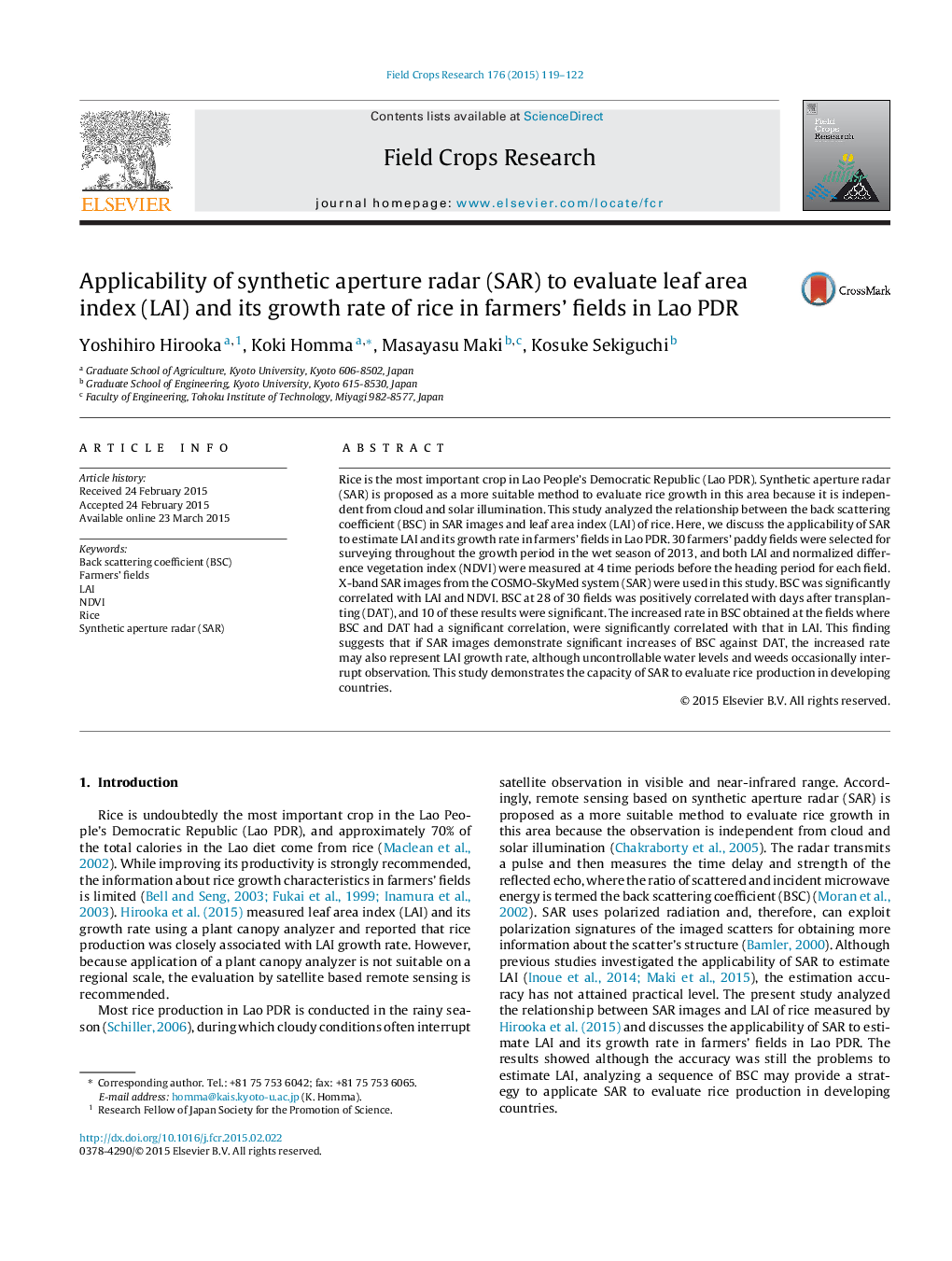| Article ID | Journal | Published Year | Pages | File Type |
|---|---|---|---|---|
| 4509912 | Field Crops Research | 2015 | 4 Pages |
•This study applied SAR to estimate LAI and its growth rate in Lao PDR.•Back scattering coefficient (BSC) of SAR was correlated with LAI and NDVI.•Increase of BSC against day represented LAI growth.
Rice is the most important crop in Lao People's Democratic Republic (Lao PDR). Synthetic aperture radar (SAR) is proposed as a more suitable method to evaluate rice growth in this area because it is independent from cloud and solar illumination. This study analyzed the relationship between the back scattering coefficient (BSC) in SAR images and leaf area index (LAI) of rice. Here, we discuss the applicability of SAR to estimate LAI and its growth rate in farmers’ fields in Lao PDR. 30 farmers’ paddy fields were selected for surveying throughout the growth period in the wet season of 2013, and both LAI and normalized difference vegetation index (NDVI) were measured at 4 time periods before the heading period for each field. X-band SAR images from the COSMO-SkyMed system (SAR) were used in this study. BSC was significantly correlated with LAI and NDVI. BSC at 28 of 30 fields was positively correlated with days after transplanting (DAT), and 10 of these results were significant. The increased rate in BSC obtained at the fields where BSC and DAT had a significant correlation, were significantly correlated with that in LAI. This finding suggests that if SAR images demonstrate significant increases of BSC against DAT, the increased rate may also represent LAI growth rate, although uncontrollable water levels and weeds occasionally interrupt observation. This study demonstrates the capacity of SAR to evaluate rice production in developing countries.
